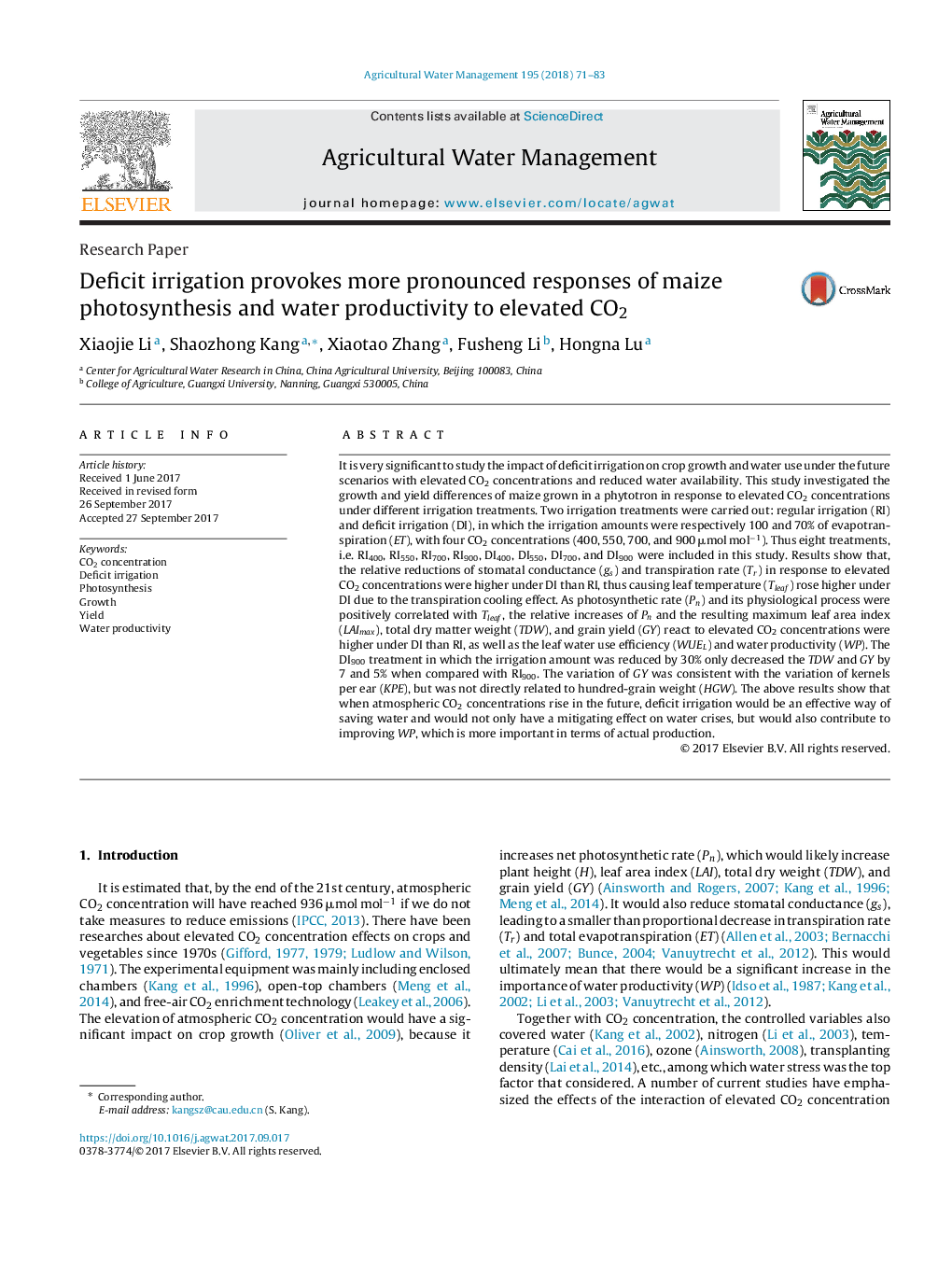| Article ID | Journal | Published Year | Pages | File Type |
|---|---|---|---|---|
| 5758237 | Agricultural Water Management | 2018 | 13 Pages |
Abstract
It is very significant to study the impact of deficit irrigation on crop growth and water use under the future scenarios with elevated CO2 concentrations and reduced water availability. This study investigated the growth and yield differences of maize grown in a phytotron in response to elevated CO2 concentrations under different irrigation treatments. Two irrigation treatments were carried out: regular irrigation (RI) and deficit irrigation (DI), in which the irrigation amounts were respectively 100 and 70% of evapotranspiration (ET), with four CO2 concentrations (400, 550, 700, and 900 μmol molâ1). Thus eight treatments, i.e. RI400, RI550, RI700, RI900, DI400, DI550, DI700, and DI900 were included in this study. Results show that, the relative reductions of stomatal conductance (gs) and transpiration rate (Tr) in response to elevated CO2 concentrations were higher under DI than RI, thus causing leaf temperature (Tleaf) rose higher under DI due to the transpiration cooling effect. As photosynthetic rate (Pn) and its physiological process were positively correlated with Tleaf, the relative increases of Pn and the resulting maximum leaf area index (LAImax), total dry matter weight (TDW), and grain yield (GY) react to elevated CO2 concentrations were higher under DI than RI, as well as the leaf water use efficiency (WUEL) and water productivity (WP). The DI900 treatment in which the irrigation amount was reduced by 30% only decreased the TDW and GY by 7 and 5% when compared with RI900. The variation of GY was consistent with the variation of kernels per ear (KPE), but was not directly related to hundred-grain weight (HGW). The above results show that when atmospheric CO2 concentrations rise in the future, deficit irrigation would be an effective way of saving water and would not only have a mitigating effect on water crises, but would also contribute to improving WP, which is more important in terms of actual production.
Related Topics
Life Sciences
Agricultural and Biological Sciences
Agronomy and Crop Science
Authors
Xiaojie Li, Shaozhong Kang, Xiaotao Zhang, Fusheng Li, Hongna Lu,
